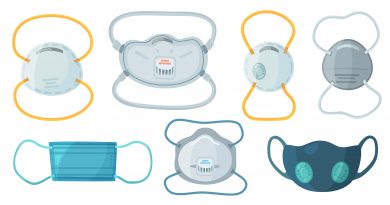Dogs & Climate Change: Minding The Safety Of Our Fur Children
Dogs and humans go way back– like, co-evolved alongside one another since they evolved from different species altogether- so, it’s easy to sometimes forget that they don’t work quite the same way as we do physiologically. This is ever more important for us to remember in the age of climate change, when my wife and I wake up in the morning and mutter to each other that there’s a high of 90°F forecasted today, plus potential tornadoes. Because why not? Anyway, here are some tips for keeping doggo cooler during extreme weather. Most of them are common sense, but they’re often things we forget about.
Dogs, Temperature, and Biology 101
Let’s first remember that dogs, unlike humans, do not really sweat– except through the pads of their feet and their nose. This is why dogs pant– to keep themselves cool. As the respiratory tract comprises fairly resilient, elastic tissue and muscles, elevated rates of breathing from panting aren’t a bad thing– it’s just how dog bodies work to keep cool.
As dogs are usually covered in fur, too, having once prowled the tundra as wolves many millennia ago, they’re not all meant to thrive in super hot conditions, but instead are meant to be able to survive in winter conditions. This means that we should be mindful of dogs with thick, black fur, like Moona (below). Low albedo surfaces like black fur or asphalt absorb much more heat from the sun, rather than white surfaces or white fur, which reflect more heat. It’s always valuable to consider giving your dog a summer cut, too, which they can then grow out in time for the winter months!

1. Avoid walks during the hottest parts of the day.
This is kinda obvious, but it can be hard to remember when we as a society are so obsessed with the virtue of being busy all the time and only can do stuff when we have a break in our crazy schedules. In other words, it’s important to plan ahead to avoid having to worry about this. Especially in cities, asphalt and concrete hold heat well after the sun has descended from its peak in the sky.
This means that while it might be 5-7pm, the ground is still going to be very warm, meaning that the air immediately above it– at doggie height- is going to be much warmer, too. Hot pavement is also uncomfortable for dog feet, which are already quite sensitive– a hot day can result in temperatures upward of 140°F, which, if you were unaware, is the temperature at which things start to go seriously wrong for living things.
So, don’t think you’re going to evade the heat just by going as soon as you get off work. Think about doing a walk on the early end of the day and/or the very end of the day, when there’s more access to shade. Also, parks are great! Urban heat island means that there can be a more than 17°F temperature differential on the hottest days between shaded grass areas under a tree and the hottest areas of dark asphalt without shade.
2. Bring water on walks and trips.
Oddly, our dogs often don’t seem to want to drink water on long walks, but I suspect this is because they get easily distracted and are thinking less about self-preservation than they are about the absolute imperative of getting home so they can flop on the couch in front of a fan. But it’s still important to be prepared. Hydration is one of the most important things on a hot day. Dogs might not need sunscreen like humans do, but they definitely need water. The evapotranspiration that helps keep humans cool through sweating works similarly for dogs panting, which means that a steady supply of water is required in hot, pantable weather.

3. Use technology!
The first floor of our house isn’t air conditioned, which, with foot-thick masonry walls, isn’t that big a deal because the house stays pretty cool even on the hottest days. We do, however, use a floor fan to supply more cool air in dog territory, especially when they’re in their crate. We have a cooling pad, for example, that none of our dogs have any interest in. The idea of a cooling pad is the same idea behind a tile floor– water and ceramic have a higher thermal mass than just air, which means that they take much longer to heat up (and hold heat longer, of course). One approach to the cooling pad is to put a familiar, more comfortable layer on top of it, like a favored blanket, pillow, or dog bed, while the cooling pad can still remain cool underneath.
Of course, the most important one that most people know is to never leave a dog in a hot car. This can be done for very short stops– say, five to ten minutes, when parked in the shade, with the windows cracked- but it’s something you should never do if it’s more than a few minutes. Unless, of course, you can keep the air conditioning on.
If humans are able to survive climate change, we hope that dogs will be able to as well! It’s just a question of making sure our– ahem- children, are adequately taken care of and that we’re tending to their every need, of course, as this is what we’re supposed to do anyway as dog owners, right?



